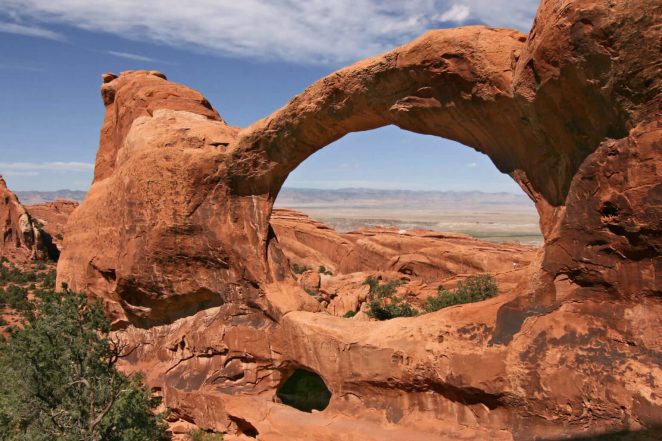Desert Solitaire: A Comment on Culture and Environment by E.Abbey
For several seasons Edward Abbey worked as a ranger in what is today known as the Arches National Park in eastern Utah. While performing his duties during the summer season, Abbey lived alone in an old-fashioned caravan relatively far from the nearest permanent town of Moab. Desert Solitaire, which was published in 1968, is based on the journals kept by Abbey during his seasons at the Arches.
The book portraits the joys and toils of the desert with its plants and creatures, and uses these wonders of untouched wilderness as a context in which to establish a critical comment on the American impulse to commercialize nature in the name of preservation. In addition a particular damming project in Glen Canyon along the Colorado River, receives much attention from the author, and the politicians and investors responsible for the project get their fair share of blame and sarcasm.This article will briefly examine the contents of Desert Solitaire and outline its major themes and implicit meanings.

Desert Solitaire: A Season in the Wilderness – Brief Summary

"use strict";
var adace_load_690e2fa7438d9 = function(){
var viewport = $(window).width();
var tabletStart = 601;
var landscapeStart = 801;
var tabletEnd = 961;
var content = '%3Cdiv%20class%3D%22adace_adsense_690e2fa7438a0%22%3E%3Cscript%20async%20src%3D%22%2F%2Fpagead2.googlesyndication.com%2Fpagead%2Fjs%2Fadsbygoogle.js%22%3E%3C%2Fscript%3E%0A%3Cstyle%3E%0A%40media%28max-width%3A%20600px%29%20%7B.adace_adsense_690e2fa7438a0%20%7Bwidth%3A300px%3B%20height%3A250px%7D%7D%0A%40media%28min-width%3A%20601px%29%20%7B.adace_adsense_690e2fa7438a0%20%7Bwidth%3A728px%3B%20height%3A90px%7D%7D%0A%40media%28min-width%3A%20801px%29%20%7B.adace_adsense_690e2fa7438a0%20%7Bwidth%3A728px%3B%20height%3A90px%7D%7D%0A%40media%28min-width%3A%20961px%29%20%7B.adace_adsense_690e2fa7438a0%20%7Bwidth%3A728px%3B%20height%3A90px%7D%7D%0A%3C%2Fstyle%3E%0A%09%09%3Cins%20class%3D%22adsbygoogle%22%0A%09%09style%3D%22display%3Ablock%3Bwidth%3A728px%3Bheight%3A90px%3B%22%0A%09%09data-ad-client%3D%22ca-pub-2390509622267115%22%0A%09%09data-ad-slot%3D%227101896489%22%0A%09%09%0A%09%09%3E%3C%2Fins%3E%0A%09%09%3Cscript%3E%28adsbygoogle%20%3D%20window.adsbygoogle%20%7C%7C%20%5B%5D%29.push%28%7B%7D%29%3B%3C%2Fscript%3E%3C%2Fdiv%3E';
var unpack = true;
if(viewport
})(jQuery);


